"Goose and Duck Controversy" The difference between goose down and duck down
Time : 2020-08-04 13:33:45
2001 was the most intense year in the down industry, and the "Goose and Duck Controversy" became a hot spot for corporate publicity and news media reports. To this day, this controversy continues. Is it necessary to make a rigid distinction between the superior and the inferior? Let's analyze the difference between goose down and duck down from various aspects.
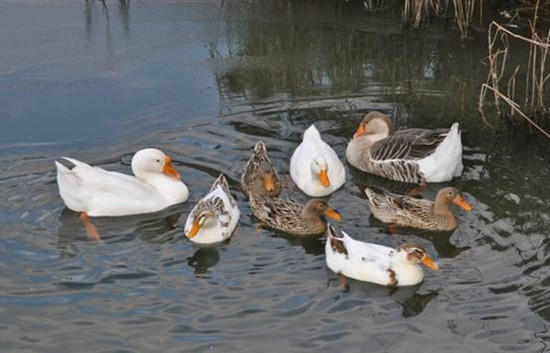
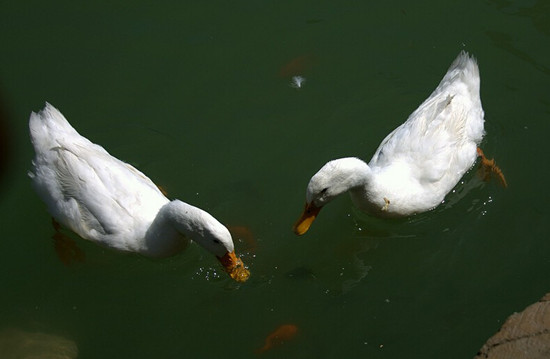
The feed for the geese is mainly plant-based, and general weeds and aquatic plants can be eaten by the geese. Therefore, the goose down has less oil content and almost no peculiar smell.
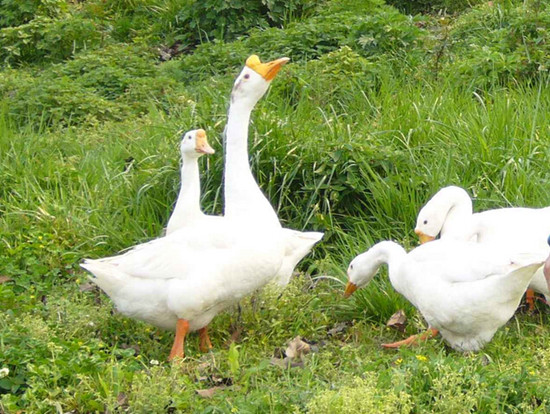
The smell has always been the focus of comparison between goose down and duck down, but some saying that "duck down has a heavier odor than goose down" is wrong. Yao Xiaoman, chairman of the China Down Industry Association, believes: "The production and processing processes of goose down and duck down are the same. Goose down and duck down that meet the standards are odorless and harmless, while goose down and duck down that have peculiar smells are not up to the standard. "
Fluffy comparison
In the national supervision and spot check, physical and chemical tests were carried out on goose and duck down with a down content of about 90% in different regions and origins. The results showed that the goose down was slightly larger and the bulkiness was slightly higher than that of the duck down, but the warmth retention performance was similar. Large, while the other indicators are not much different.
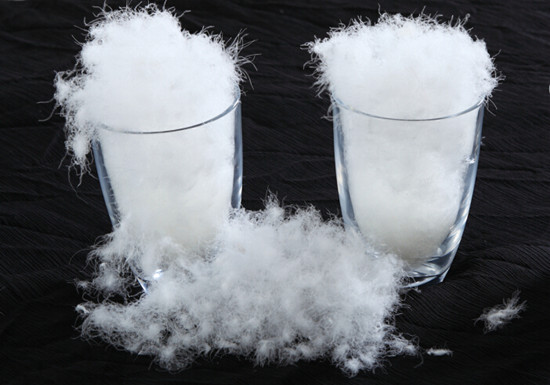
Whether it is goose down or duck down, there are many factors that affect the bulkiness of down. Under the same conditions of down content:
The ratio of down and down in the down will affect the fluffiness of down. The higher the proportion of down in the down, the better the bulkiness and the better the quality of the down. Conversely, the higher the proportion of down filaments in the down, the worse the bulkiness.
The size of the feathers in the down will also affect the bulkiness of the down. The larger the velvet, the higher the bulkiness, and the smaller the velvet, the lower the bulkiness and the poorer down quality.
The moisture content in the down, that is, the degree of dryness, will also affect the bulkiness. The relatively dry down is always better than the less dry down.
The oxygen consumption index of down will also affect the bulkiness of down.
Analyzed from the above four factors, it cannot be simply considered that goose down is better than duck down. The key depends on the quality of the purchased goose down and duck down, and secondly depends on the process of goose down and duck down in the processing process, and the means of quality control.
Goose and duck down products comparison
Whether it is goose down or duck down, it is collectively referred to as down in customary terms. Down jackets, duvets, down sleeping bags, etc. are made of down as filling materials, which are called down products. Because down products are soft, fluffy, and warm, they are deeply loved by consumers. Therefore, goose down and duck down are natural good products for keeping warm.
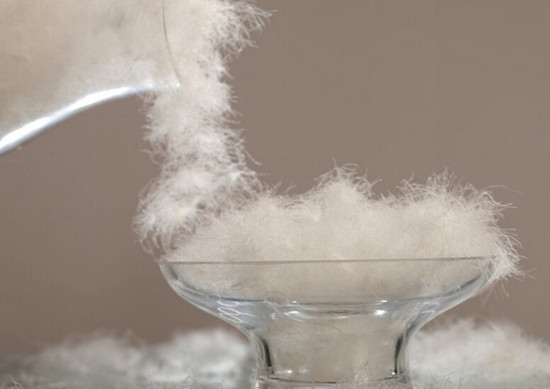
Duck down can produce up to 3 seasons a year, but goose down only produces one season a year, and the down yield of each goose is small. The higher cost of goose breeding determines that the price of goose down is much higher than that of duck down. If you say that you buy goose down for taste, then you buy duck down for benefits. In terms of cost performance, duck down has a competitive advantage over goose down. At present, domestic down products mainly use duck down as the filling material, which has been approved by consumers after years of market inspection. Developed countries abroad mainly use goose down as the raw material of duvet, while the raw material of down jacket is still mainly duck down.
There is a very important reason why the raw materials of down jackets at home and abroad are mainly duck down, because clothing will be washed frequently, and duck down contains a lot of fat, which is a protective layer for down, which can keep duck down with good bulkiness even after multiple washings. . However, goose down contains less oil and is not washable, and the number of washing times can easily lead to separation of the down and the core, increasing the down and decreasing the bulkiness. Some down manufacturers have tested 90% goose down jackets and 90% duck down jackets with down content. After 20 washes, the down jacket content of goose down jackets was 85%, and the down jacket content of duck down jackets was 89%.
So, goose down and duck down have their own advantages and disadvantages, and cannot be generalized, let alone distinguish who is good and who is bad.

Smell contrast
We know that ducks are omnivorous animals. No matter roughage or green fodder, insects, earthworms, fish and shrimps can be used as duck food. Due to the fat in food, duck down contains a lot of fat and generally has a fishy smell, which is called "fat fishy" or "duck body odor" in the industry.

The feed for the geese is mainly plant-based, and general weeds and aquatic plants can be eaten by the geese. Therefore, the goose down has less oil content and almost no peculiar smell.

The smell has always been the focus of comparison between goose down and duck down, but some saying that "duck down has a heavier odor than goose down" is wrong. Yao Xiaoman, chairman of the China Down Industry Association, believes: "The production and processing processes of goose down and duck down are the same. Goose down and duck down that meet the standards are odorless and harmless, while goose down and duck down that have peculiar smells are not up to the standard. "
Fluffy comparison
In the national supervision and spot check, physical and chemical tests were carried out on goose and duck down with a down content of about 90% in different regions and origins. The results showed that the goose down was slightly larger and the bulkiness was slightly higher than that of the duck down, but the warmth retention performance was similar. Large, while the other indicators are not much different.

Whether it is goose down or duck down, there are many factors that affect the bulkiness of down. Under the same conditions of down content:
The ratio of down and down in the down will affect the fluffiness of down. The higher the proportion of down in the down, the better the bulkiness and the better the quality of the down. Conversely, the higher the proportion of down filaments in the down, the worse the bulkiness.
The size of the feathers in the down will also affect the bulkiness of the down. The larger the velvet, the higher the bulkiness, and the smaller the velvet, the lower the bulkiness and the poorer down quality.
The moisture content in the down, that is, the degree of dryness, will also affect the bulkiness. The relatively dry down is always better than the less dry down.
The oxygen consumption index of down will also affect the bulkiness of down.
Analyzed from the above four factors, it cannot be simply considered that goose down is better than duck down. The key depends on the quality of the purchased goose down and duck down, and secondly depends on the process of goose down and duck down in the processing process, and the means of quality control.
Goose and duck down products comparison
Whether it is goose down or duck down, it is collectively referred to as down in customary terms. Down jackets, duvets, down sleeping bags, etc. are made of down as filling materials, which are called down products. Because down products are soft, fluffy, and warm, they are deeply loved by consumers. Therefore, goose down and duck down are natural good products for keeping warm.

Duck down can produce up to 3 seasons a year, but goose down only produces one season a year, and the down yield of each goose is small. The higher cost of goose breeding determines that the price of goose down is much higher than that of duck down. If you say that you buy goose down for taste, then you buy duck down for benefits. In terms of cost performance, duck down has a competitive advantage over goose down. At present, domestic down products mainly use duck down as the filling material, which has been approved by consumers after years of market inspection. Developed countries abroad mainly use goose down as the raw material of duvet, while the raw material of down jacket is still mainly duck down.
There is a very important reason why the raw materials of down jackets at home and abroad are mainly duck down, because clothing will be washed frequently, and duck down contains a lot of fat, which is a protective layer for down, which can keep duck down with good bulkiness even after multiple washings. . However, goose down contains less oil and is not washable, and the number of washing times can easily lead to separation of the down and the core, increasing the down and decreasing the bulkiness. Some down manufacturers have tested 90% goose down jackets and 90% duck down jackets with down content. After 20 washes, the down jacket content of goose down jackets was 85%, and the down jacket content of duck down jackets was 89%.
So, goose down and duck down have their own advantages and disadvantages, and cannot be generalized, let alone distinguish who is good and who is bad.

 中文
中文 English
English